All UK Freeports
Explore each of the 12 UK Freeports. Each one is strategically located, each is tailored to its local strengths and needs, and each fosters innovation, economic growth, and job creation.
- Anglesey Freeport
- Celtic Freeport
- East Midlands Freeport
- Freeport East
- Forth Green Freeport
- Humber Freeport
- Inverness and Cromarty Firth Green Freeport
- Liverpool City Region Freeport
- Plymouth and South Devon Freeport
- Solent Freeport
- Teesside Freeport
- Thames Freeport
Anglesey Freeport
Anglesey Freeport – a partnership between Isle of Anglesey County Council and Stena Line – drives economic growth and prosperity across North Wales. With an ambition to establish the region as a hub for low-carbon innovation and booming international trade, Anglesey Freeport offers new opportunities for local communities, enhances commercial competitiveness of North Wales, and supports the UK’s economic prosperity.
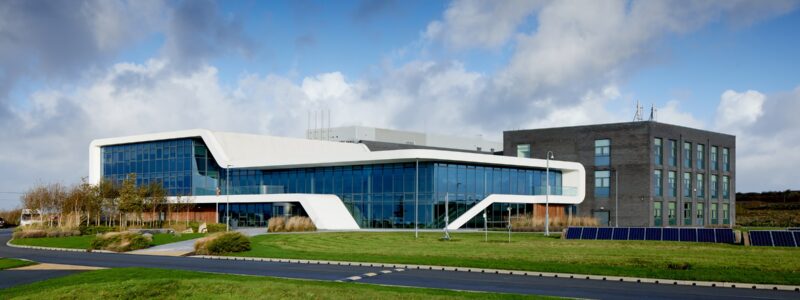
- Anglesey Freeport and IACC’s Energy Island Programme collaborate to promote Anglesey as a low-carbon energy development leader, offering streamlined processes and financial flexibilities for businesses across this sector.
- The first steps have been taken to revitalise Prosperity Parc, a 200-acre site adjacent to Holyhead within Anglesey Freeport. Stena Line has submitted a demolition notice for the currently derelict buildings on site, paving the way for new development, commercial investment and local job creation.
- Anglesey Freeport is collaborating with local education partners to support North Wales communities by establishing the inaugural Trade Centre of Excellence in Wales. This helps secure Anglesey’s position as a leader in global trade expertise.
See the Anglesey Freeport website for more details.
Celtic Freeport
Celtic Freeport will accelerate significant inward investment in new manufacturing facilities and port infrastructure to support the roll-out of floating offshore wind (FLOW) from the Celtic Sea, while providing the backbone for a cleaner future based on the hydrogen economy, sustainable fuels, carbon capture and storage, cleaner steel and low-carbon logistics.
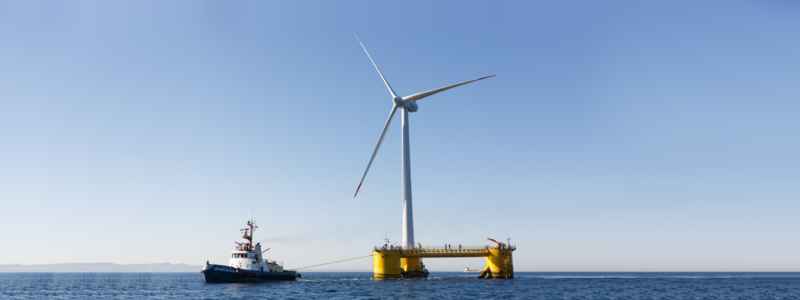
- Building on the extensive specialist skill base, transmission and pipelines, natural capital and distribution facilities, the Celtic Freeport’s growth sectors are floating offshore wind (FLOW), the production and distribution of alternative fuels (hydrogen, sustainable aviation fuel, biofuels) and low-carbon logistics.
- The Celtic Freeport will accelerate the roll-out of floating offshore wind (FLOW), the hydrogen economy, marine energy, and sustainable fuel production. There will also be substantial investment in port infrastructure at 2 new energy ports and factories to secure first-mover advantage in the global FLOW market.
- The Celtic Freeport will deliver future green skills pathways for young people through a dedicated local legacy fund. It will also establish an innovation network to bring together academics and businesses, utilising innovation assets like ORE Catapult.
See the Celtic Freeport website for more details.
East Midlands Freeport
East Midlands Freeport is creating a national, world-leading hub for global trade and investment. They will be a hotbed for innovation and low carbon energy production, boost skills and encourage sustainable job creation, in the heart of England with unrivalled connectivity by rail, road and air.
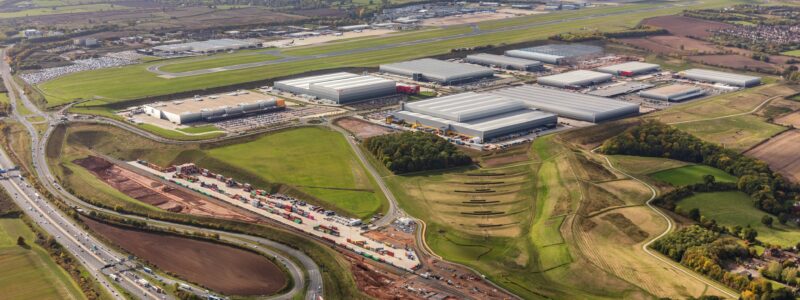
- The focus is to create high-skilled jobs in advanced manufacturing, low carbon and renewable energy production, along with supporting world-leading research at Space Park Leicester – it’s first customs site operator.
- East Midlands Freeport is already working to create tens of thousands of jobs and add billions to the East Midlands economy. Businesses are occupying sites on the East Midlands Airport and Gateway Industrial Cluster. Maritime Transport is expanding its rail terminal and Ratcliffe Power Station gained approval for its Local Development Order.
- The Freeport is currently investing over £25 million making sites ready to harnessing the power of the region’s universities – before reinvesting hundreds of millions in the region.
See the East Midlands Freeport website for more details.
Freeport East
Freeport East aspires to be the UK’s leading centre for trade, green energy, and innovation. It will be a Global Freeport for a Global Britain. It will deliver unique opportunities for investment, business-led growth and levelling up that will create benefits at a local, national, and international level.
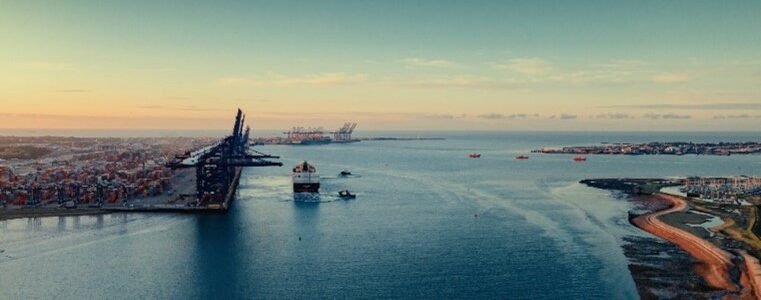
- Freeport East is home to a vibrant clean energy sector, with high potential for growth in green hydrogen, clean fuels, cleantech manufacturing and offshore wind. It also houses leading universities and excels in logistics, digital technology, and agritech.
- There will be a 122-hectare deep-water port expansion in Bathside Bay to support the next generation offshore wind manufacturing and construction. In Felixstowe, a 68-acre site will provide 1.45 million sq. ft. of industrial facilities with unparalleled links for UK, Europe and global trade. Gateway 14, East Anglia’s largest business, innovation and logistics park, is situated midway between the world-class clusters of Cambridge and the Port of Felixstowe.
- A Green Hydrogen Hub will harness abundant local renewable energy to produce green hydrogen for future transport and industrial uses. This will be reinforced by the Freeport East Innovation Cluster, ensuring businesses and investors can plug into active innovation networks.
See the Freeport East website for more details.
Forth Green Freeport
Forth Green Freeport will boost decarbonisation and re-industrialise Scotland’s industrial heartland by attracting significant inward investment to prime development land.
Investments will expand capacity in logistics and trade, renewables manufacturing, alternative fuels and carbon capture and storage.
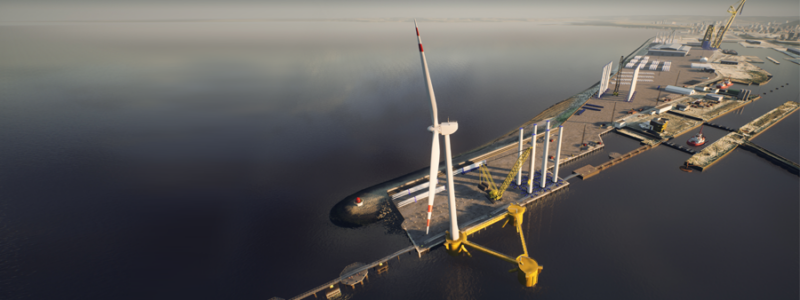
- Forth Green Freeport will accelerate expertise in shipbuilding and capitalise on the existing collaboration between industry and academia, delivering progress in advanced modular manufacturing and automation, low carbon logistics, e-commerce, and pharmaceuticals. The developing offshore wind, hydrogen and alternative fuels sectors are growth areas set to thrive alongside an expanded fast moving freight hub at Edinburgh Airport.
- Forth Green Freeport will deliver Scotland’s biggest offshore renewables development platform across Burntisland, Leith and Rosyth. It also will drive a thriving hydrogen economy and alternative fuels cluster in Grangemouth, all bolstered by new freight, rail and alternative fuel terminals.
- Forth Green Freeport will provide skill enhancement programmes by setting up a specialised fund. It will establish new research and development centres, innovation hubs for small and medium-sized enterprises and start-ups, and training facilities. Additionally, an innovation network will be formed to connect the right academics and businesses in the right locations.
See the Forth Green Freeport website for more details.
Humber Freeport
Humber Freeport inspires transformative change, driving innovation, and sustainability to boost global trade and investment. By championing the UK’s net zero agenda, it will create jobs and foster prosperity both regionally and globally.
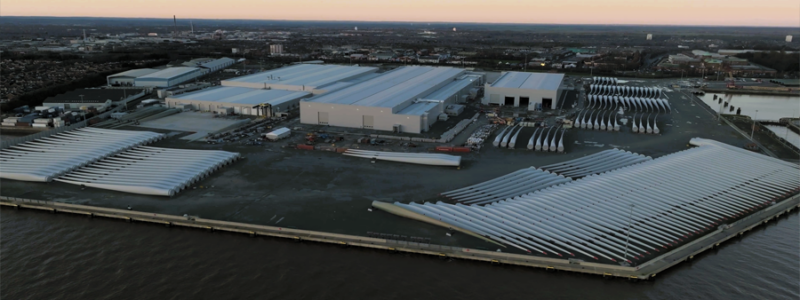
- As the UK’s Energy Estuary, the Humber specialises in offshore wind and renewable energy, with significant strengths, capabilities and assets in advanced manufacturing, advanced chemicals processing, maritime services, and logistics.
- Across the 3 tax sites it will deliver a hydrogen plant for chemical cluster decarbonisation, an energy park for investors, a rare earths plant for OSW and EV markets, a significant expansion for OSW blade manufacturing, opportunities for rail manufacturer supply chains, a large paper manufacturer, deep-water quays and OSW manufacturing facilities.
- Humber Freeport has initiated 3 key development strands: net zero, skills, and innovation, with regional working groups engaging businesses and communities to promote investment and growth opportunities.
See the Humber Freeport website for more details.
Inverness and Cromarty Firth Green Freeport
Inverness and Cromarty Firth Green Freeport is Europe’s largest heavy engineering cluster with the capability to support manufacturing and marshalling for offshore wind projects and supporting ancillary industries.
There are 4 ports over 470 Hectares with sheltered deepwater access and wet storage capability, with more land under development or already available. Green hydrogen projects are also under development enabling a range of energy management options.
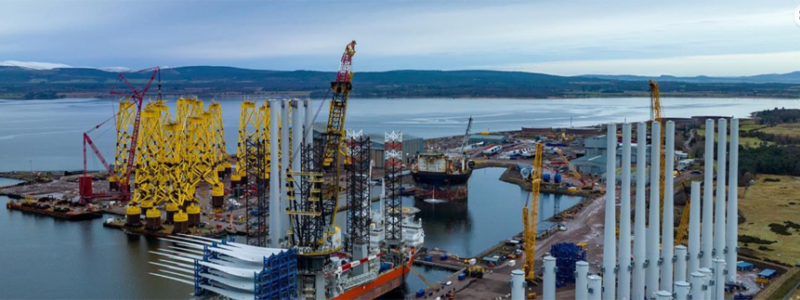
- Key sectors include floating and fixed offshore wind, green hydrogen, marine technologies, life sciences and heavy marine engineering.
- SUMITOMO has chosen this location to invest in a £350 million cable factory to address the demand for high voltage cables. Associated British Port have secured a 60-hectare site and are exploring the creation of energy related infrastructure. £300 million equity investment commitment into Ardersier Port by leading US energy investor Quantum Energy Partners.
- The Green Freeport has created a training and innovation hub known as The PowerHouse to support development of the local workforce and supply chain to support inward investment and growth.
See the Inverness and Cromarty Firth Green Freeport website for more details.
Liverpool City Region Freeport
The Liverpool City Region has the UK’s leading transatlantic port, handling 45% of the UK’s trade from the US. It is estimated that the Freeport will add £850 million to the local economy and contribute towards its plans to boost R&D and target green technologies to reach net zero by 2040. The Freeport will fuel greater social mobility, innovation, and inclusion for our whole region.
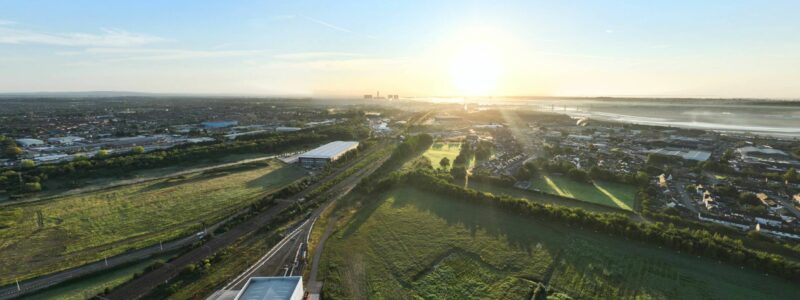
- Liverpool City Region has world leading capabilities, assets and skills in advanced manufacturing, health and life sciences, biomanufacturing and digital and creative sectors.
- LCR Freeport has the UK’s leading Custom Site Operator pipeline of over 100 businesses and is internationally recognised as a hub for trade & investment. Financial Times’ fDi Intelligence, has named the LCR Freeport as its inaugural “Rising Star” in its Global Free Zones of the Year awards, citing its focus on “the creation of highly skilled jobs, R&D initiatives, and the highest sustainability standards.”
- Multimodal, decarbonisation infrastructure projects, link access roads, skills academies and innovation challenge funds are just some of the key projects LCR Freeport is working to deliver.
See the Liverpool City Region Freeport website for more details.
Plymouth and South Devon Freeport
Supercharging the South West economy by building on the region’s unique national capabilities in marine, defence and space with low carbon applications to form globally impactful clusters and a UK Innovation Superpower. The Freeport provides access to over 1000km2 of authorised and de-conflicted water space and world-leading research and business partners in marine autonomy, clean maritime, digital ocean technologies, defence mission modules and offshore renewable energy support solutions.
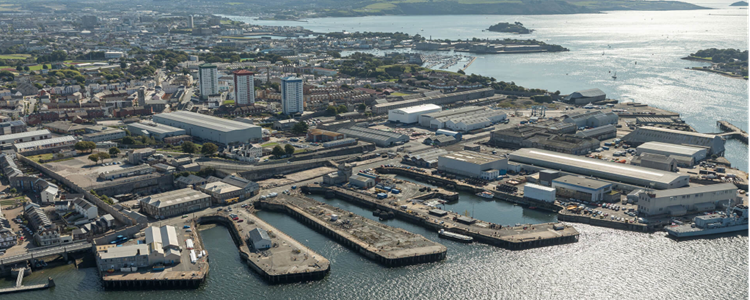
- Building on strong advanced manufacturing and engineering clusters with leading edge specialisms in marine and defence to capitalise on major growing global markets and supporting the emerging space sector.
- In Millbay Docks, £1.3 million Freeport seed capital funding is being invested into strategic infrastructure developments including increasing freight capability through doubling the existing load capacity of the wharf. The Langage Green Hydrogen Hub will be a key facility for the Freeport, helping to deliver net zero goals for Freeport operations overall and will be the first of its kind for the South West.
- Innovative businesses can work with the Freeport, the Freeport Regulation Engagement Network (FREN) and partners to test and trial marine autonomous vessels within Smart Sound Plymouth. The Freeport region also has a Sector-based Work Academy Programme (SWAP) pilot project designed and facilitated by tenants Babcock/Supacat; and the Freeport works with prospective occupiers to meet their workforce needs.
See the Plymouth and South Devon Freeport website for more details.
Solent Freeport
The Solent Freeport will seek to strengthen its trading position and develop new trading relationships as one of the UK’s most important gateways to European and global markets.
The Solent has a track record in translating innovation and new technologies into commercial success, and there is an appetite for innovation and building sustainable, long-term opportunities now and in the future.
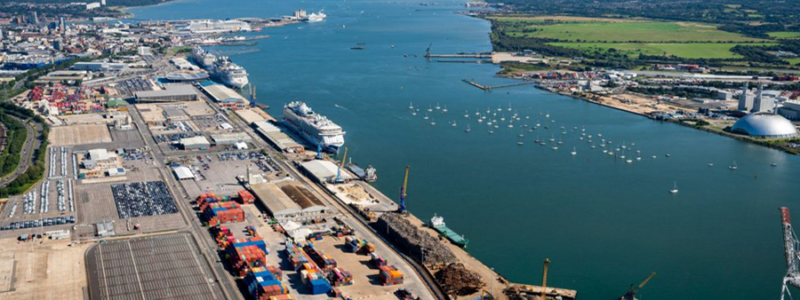
- The Solent currently has a significant concentration of innovation and R&D capability in strategic sectors including maritime, aviation and aerospace, advanced manufacturing, logistics, artificial intelligence and the digital economy.
- Marine robotics is the next chapter of marine development in the Solent Freeport area. Ocean Infinity established a state-of-the-art, remote control and data centre for robotic vessels, and it partnered with University of Portsmouth, Airborne Robotics, and Bentley Telecom to use fleets of autonomous robots to inspect offshore wind farms and to gather data from the oceans and seabed.
- Solent Freeport is a world leader for maritime education and training, and its 3 universities support innovation: the University of Southampton, the University of Portsmouth, and Solent University.
See the Solent Freeport website for more details.
Teesside Freeport
Covering 4,500 acres, and with sites at Teesworks and Teesside Airport, Teesside Freeport is expected to create more than 18,000 jobs and boost the local economy by billions in its first 5 years.
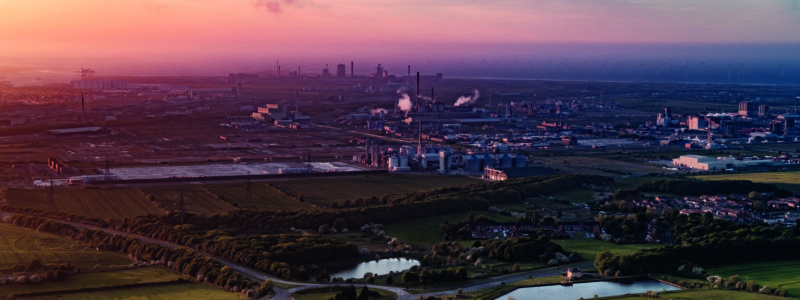
- At the heart of the UK’s biggest industrial zone and chemical sector, the Freeport specialises in biomanufacturing and low carbon making it the go-to place for renewables, offshore wind and hydrogen manufacturing.
- As part of the Freeport, Teesworks boasts £650 million investment from SeAH Wind. The mammoth offshore facility will be the biggest of its kind in the world. Other investments include Circular Fuels’ £150 million fuel-from-waste plant, the UKs premier CCUS project, Net Zero Teesside and a £113 million investment in the deep-water South Bank Quay.
- The Teesworks Skills Academy supports employers and local people to create a world-class workforce for the future, equipped with the expertise businesses at the Teesworks site will need to grow and succeed.
See the Teesside Freeport website for more details.
Thames Freeport
Thames Freeport is a unique, once-in-a-generation opportunity to stimulate trade, accelerate energy transition, and transform the lives of people in London and the boroughs to its east through the creation of 21,000 jobs and harnessing innovation to power the future economy. It’s the biggest development area in the UK closest to the Europe’s largest consumer market, connecting to 130 ports in over 65 countries, with land ready for development.
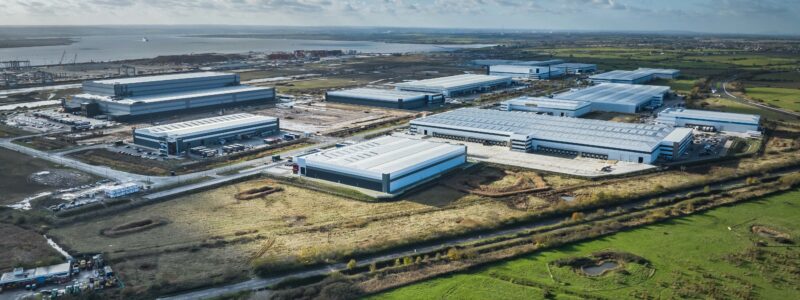
- A world class industrial and innovation cluster is taking shape on the banks of the River Thames; a beacon for advanced manufacturing, clean energy technologies, and future logistics that will reshape supply chains.
- Thames Freeport is enhancing global capacity by a third and will drive investment in 5G, modular construction and future fuels. It will launch innovation hubs, driving increased collaboration between developers, researchers, and businesses. A new Skills Accelerator will boost the knowledge economy across the Freeport’s manufacturing and logistics cluster.
- The Thames Freeport Skills Fund will help local workers access sustainable, higher paying jobs created by the Freeport. It will provide support to skills institutions with targeted interventions, strengthening the local education ecosystem.
See the Thames Freeport website for more details.
